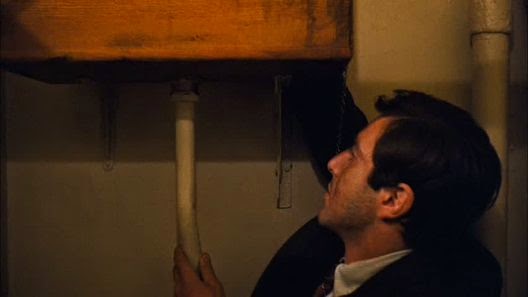JC- 14/03/2016
Over the past couple of months I have watched many TV programmes and films that have utilised certain styles and techniques of cinematography that I hope to incorporate into our final short. The ones that I have paid most attention to are:
Frank Spotnitz’s TV series – The Man In the High Castle (2015-)
The series depicts a post war dystopian future where America is occupied by Japanese and Nazi forces. Furthermore the series is beautifully shot and does well to create a gloomy overbearing sense of occupation and alienation. Many scenes are shot in dimly lit spaces that make the most of 45 degree angle lighting to cast harsh shadows on the characters’ faces. To continue, the series is shot using a lot of shallow depth of field which in turn guides and isolates the spectator’s attention to the important subjects in the shot. The series also makes use of Nourish lighting; it is these techniques that I will incorporate into our short.
Carol Reed – The Third Man (1949)
The film portrays the tale of a pulp novelist who travels to postwar Vienna and ends up investigating a death of an old friend named Harry Lime. The film is a classic British Noir which stylistically coheres to the style that has influenced the ways in which I work and from which I will continue to draw inspiration. Again, 45 degree lighting is used to provide harsh shadows on the characters’ faces. The film makes great use of canted angles – another technique I aim to incorporate into our short at times of discomfort, confusion and alienation.
Brian Helgeland – Legend (2015)
The film tells the story of the infamous Kray twin brothers in East End London. The film does well to frame the brothers in many two-shots and uses many low angle shots to emphasise the power and danger the pair hold and represent. Being a British gangster film, it does utilise some Noirish lighting techniques I like and aim to use on our short. However, the systematic low angle two-shots are the technique that influenced me for our short. I aim to frame Chris and Steve like this in situations where they have the upper hand on the overbearing psychotic criminal father Zed.
